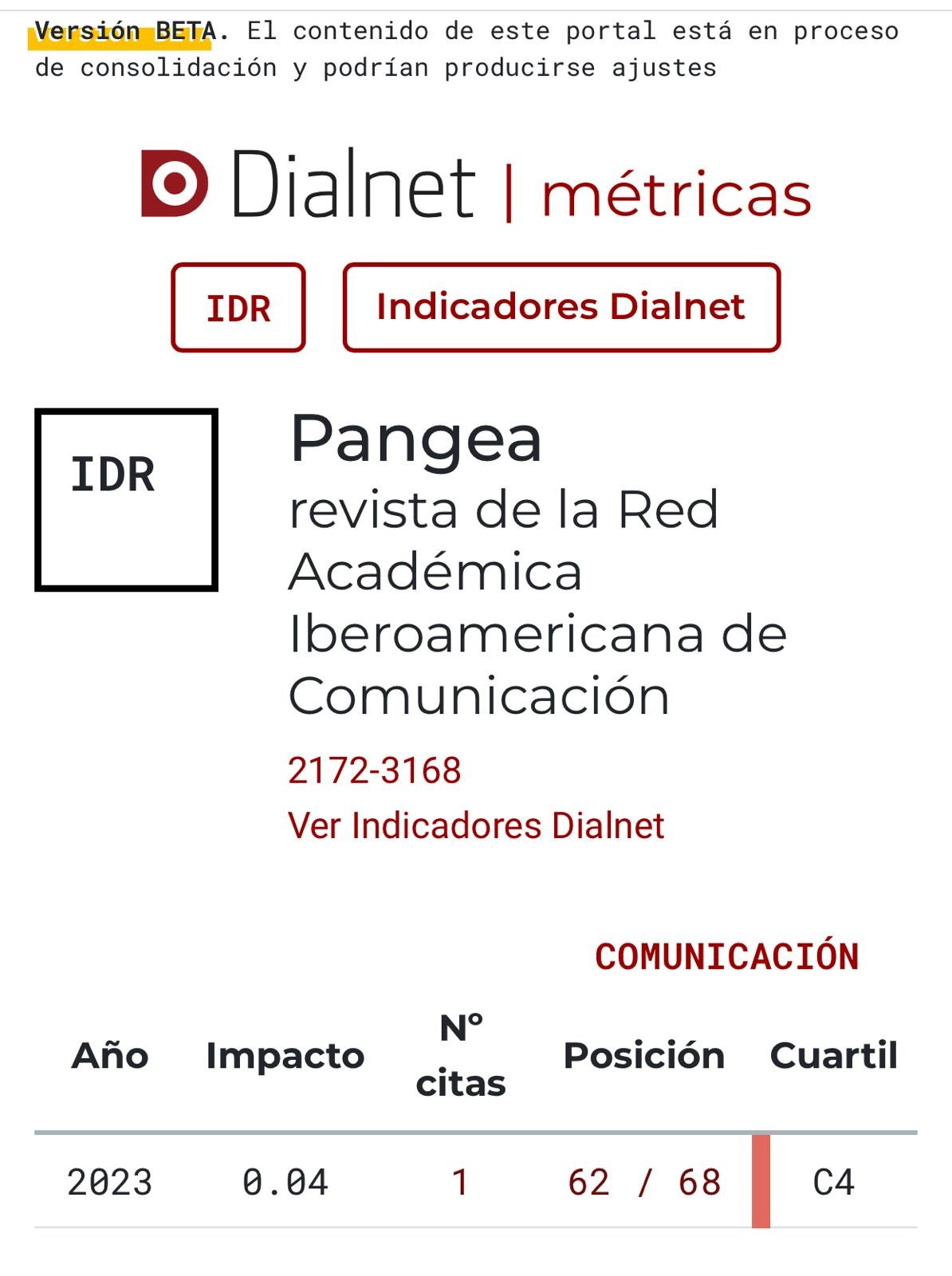The thematic of papers presented at the Latina III Congress on Social Communication
DOI:
https://doi.org/10.52203/pangea.v3i1.39Keywords:
Comunicación social, Análisis de contenidos, Red semántica, Significado, Coocurrencia, Concepto, Estad´sitica, ANatex, NetDraw, Congreso LatinaAbstract
Retrieving the titles and abstracts of the papers accepted before the Latina III Congress, we have analyzed the covered thematic. The methodology is based on statistics of words (originals), of the conceptual fields in which they were regrouped to identify the topics discussed and the coocurrences of these fields in the description of each article. So we discover that the attention was most payed on politics, for communication's contents, digital media, specially the internet, for communication's techniques, and with a priotity for analysis as work form. But the issue of the market, suggested in the call has been minimally addressed.
References
Borgatti, S.P., (2002): NetDraw: Graph Visualization Software, Harvard: Analytic Technologies.
Colle, R., (2011): El análisis de contenido de las comunicaciones, Cuadernos Artesanos n°11, 12 y 13, La Laguna, Tenerife. (http://www.revistalatinacs.org/067/cuadernos/artesanos.html)
Colle, R., (2009): La temática de la Revista Latina de Comunicación Social, en Revista Latina de CS 64, 2009 (http://www.revistalatinacs.org/09/art/07_806_13_revista/Raymond_Colle.html)
Colle, R., (2005): Anatex 3.3, Software de análisis de coocurrencias para plataforma LAMP (Linux-Apache-MySql-PHP), Santiago de Chile: Ver detalles en http://www.recinet.org/colle/anatex.htm
Colle, R., (2002): Explotar la información noticiosa, Madrid: Universidad Complutense, Depto. de Biblioteconomía y Documentación. (agotado; versión PDF disponible con el autor)
Dürsteler, J.C., (2004): «Mapas Conceptuales», en Infovisnet mensaje 141, http://www.infovis.net/Revista/num_141
Gaines, B. & Shaw, M.: Concept Maps as Hypermedia Components, Calgary: University of Calgary, http://ksi.cpsc.ucalgary.ca/articles/ConceptMaps/ (no fechado)
García Gutiérez., A., (1990): Estructura lingüística de la documentación, Murcia: Ed.Universidad de Murcia.
Harley, T. A. (2008). Word meaning, East Sussex, UK: Psychology Press.
Kleinnijenhuis, J., (2007): Semantic network analysis: old ideas and new means to master the information society, Universidad de Amsterdam, http://www.ictonderzoek.net/3/assets/File/SIREN%202008/SIREN2008_ Kleinnijenhuis.pdf
Litkowski, K. & McTavish, D., (2001): Minnesota Contextual Content Analysis system, http://www.clres.com/cata/
López, F., (2002): «El análisis de contenido como método de investigación», en XXI. Revista de educación, 2002, n.4, 167-180.
Marzal, M.A. y Moreira, J.A., (2001): «Modelos teóricos y elementos funcionales para el análisis de contenido documental: definición y tendencias», en Investigación bibliotecológica, n.15, (31), 125-162.
Neuendorf, K.A., (2002): The Content Analisis Guidebook, Thousand Oaks, London, New Delhi: Sage.
Piñuel, J.L., (2002): «Epistemología, metodología y técnicas del análisis de contenido», en Estudios de Sociolingüística 3(1), pp. 1-42, http://personales.jet.es/pinuel.raigada/A.Contenido.pdf
Poibeau, T. & Dutoit, D., (2002): «Inferring knowledge from a large semantic network», Proceeding of the Semantic networks workshop, during the Computational Linguistics Conference (COLING 2002), Taipei, Taiwan.
West, M. D. (ed.)., (2001): Theory, Method, and Practice in Computer Content Analysis. (Progress in Communication Sciences, Volume 16). Westport, CT/London: Ablex Publishing.
Downloads
Published
Issue
Section
License
Copyright (c) 2012 Raymond Colle

This work is licensed under a Creative Commons Attribution-NonCommercial-NoDerivatives 4.0 International License.
https://creativecommons.org/licenses/by-nc-nd/4.0/deed.es





